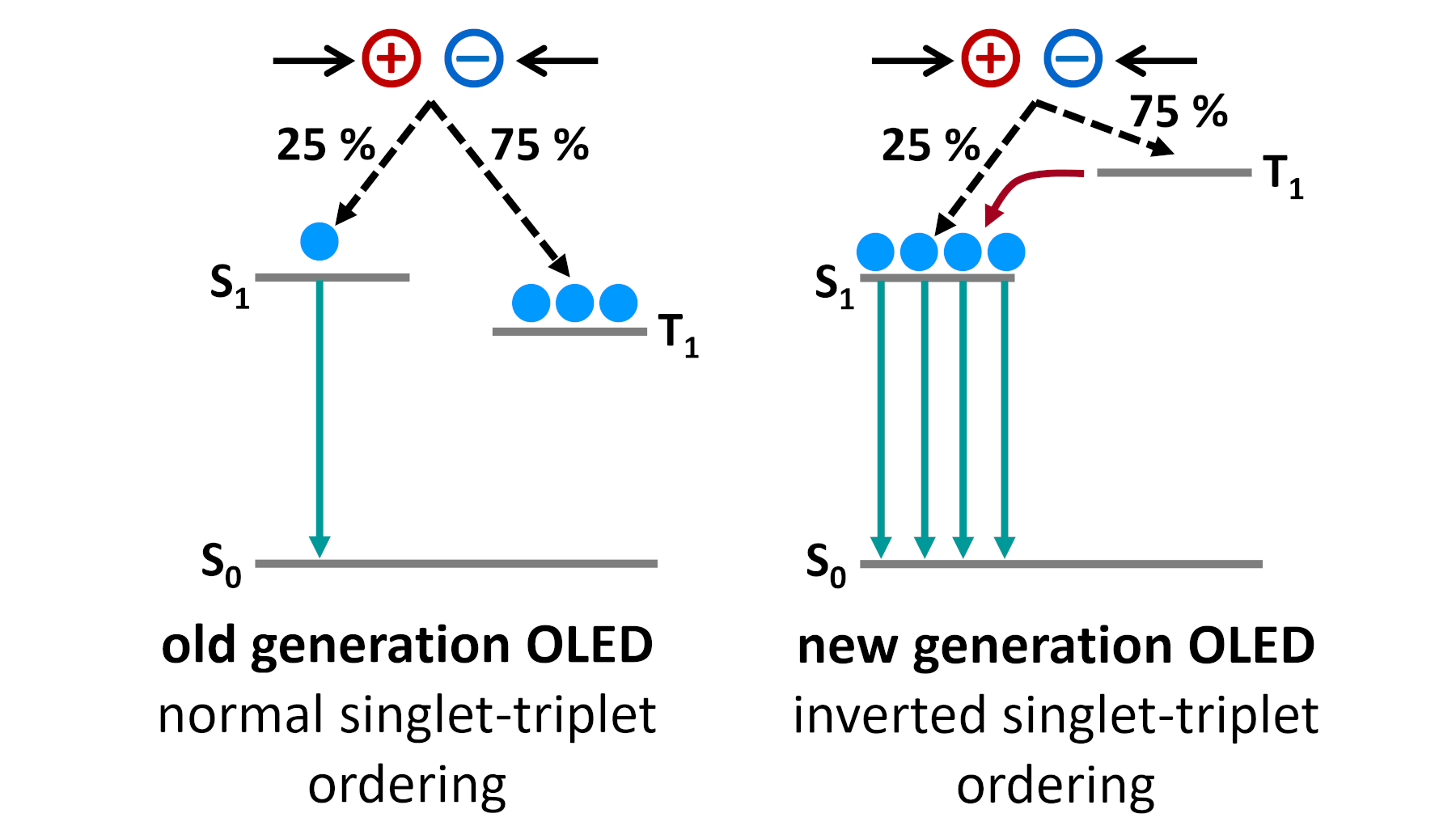Ab initio computations performed by physicists from IF PAS and Technical University of Munich indicate on existence of a wide class of organic molecules with inverted sequence of the lowest singlet and triplet states. This discovery may have important consequences for construction of a new generation of OLEDs.
Stable organic molecules in which Hund’s multiplicity rule for the relative energy of the lowest singlet (S1) and triplet (T1) excited states is violated were not known until recently, when the existence of such molecules was predicted with wavefunction-based ab initio electronic-structure calculations and this prediction was confirmed experimentally (J. Ehrmaier et al., J. Phys. Chem. A 123, 8099 (2019). The existence of chromophores with inverted S1 and T1 excited states (the energy of the S1 state is below the energy of the T1 state) may have important implications for the further optimization of organic light emitting diodes (OLEDs). According to spin statistics, the recombination of charge carriers generated in optoelectronic materials results in (emissive) singlet and (dark) triplet excitons in the ratio 1:3. Therefore, the luminescence quantum yield of standard OLEDSs cannot exceed 25%. The ground-breaking discovery of stable organic molecules with inverted singlet-triplet ordering provides the basis for the development of a new generation of organic optoelectronic materials in which the non-emissive triplet states are efficiently drained by relaxation to the lower-lying emissive singlet states, which in principle allows to achieve a 100% electron-to-photon conversion in OLEDs.
Sobolewski and Domcke have shown with ab initio electronic-structure calculations that singlet-triplet inversion is commonly found for excited states of a certain orbital symmetry in hexagonal polycyclic hydrocarbons. While these inverted states in general are not the lowest excited states in these molecules, it has been found that by replacing the interior of polycyclic hydrocarbons with graphitic boron nitride (g-BN) stabilizes the inverted singlet-triplet states, such that the singlet state becomes the lowest excited electronic state. These findings establish the existence of a new family of organic chromophores which can serve as chromophores for next-generation OLEDs.
